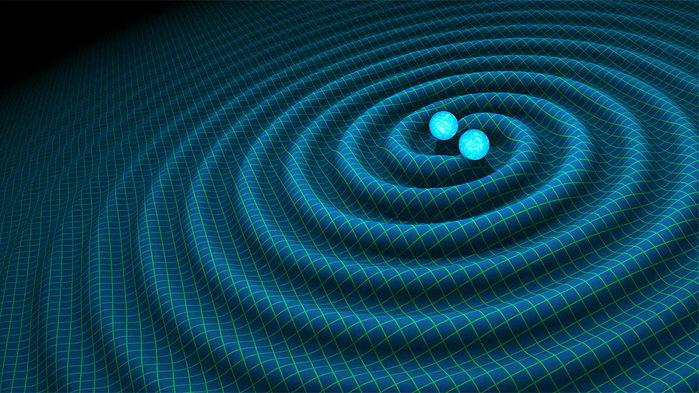Data
You will be redirected to cenamweb.org in 15 second(s). The JINA-CEE website is not updated anymore. The archived website can still be reached through the CeNAM website.
Neutron star mergers may create much of the universe’s gold

By Sid Perkins
Mar. 20, 2018, 2:25 PM
This article was originally published on Science Magazine
The occasional merger of neutron stars literally shakes the universe by sending out gravitational waves (illustrated above), but these events may also be the main source of gold and other heavy elements in the Milky Way, a new study suggests.
Some elements—such as gold, europium, and many others heavier than iron—are forged by a process dubbed rapid neutron capture, in which an atomic nucleus quickly absorbs a series of neutrons to reach a stable form before it radioactively decays. But debate rages among scientists as to where the largest proportion of such elements in the universe come from: Some suggest it happens deep within collapsing supernovae, and others propose that it occurs during the relatively rare but spectacular merger of neutron stars.
Using data gathered in August 2017 during a neutron star merger that occurred between 85 million and 160 million light-years away (an event in which the colliding stars together weighed about three times the mass of our sun), current astrophysical models suggest that that single event generated between one and five Earth masses of europium and between three and 13 Earth masses of gold, the researchers report this month in The Astrophysical Journal. And if the August 2017 merger is typical for such events, even if there are only one or two such mergers each year in a cube of space 6 million light-years on a side, they would still be the dominant source of europium in the Milky Way, the researchers say.
